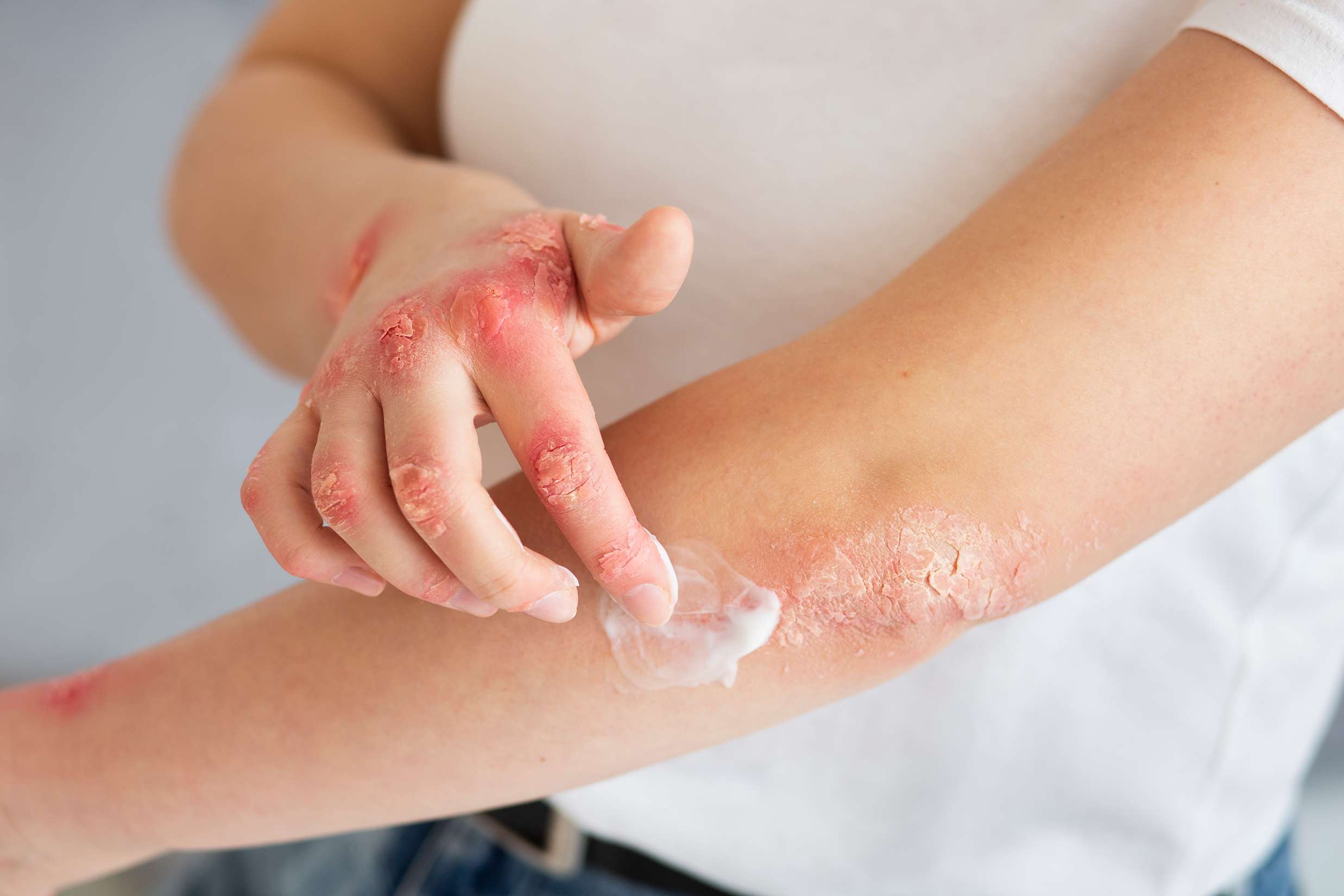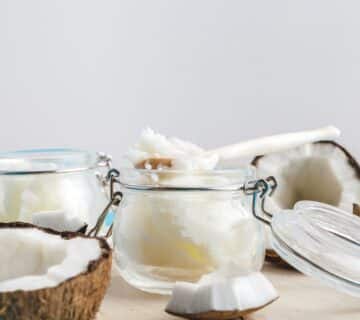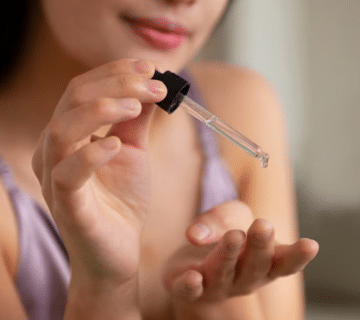Yeast infections can be downright frustrating, causing discomfort, itching, and irritation. While over-the-counter medications are commonly recommended, there’s been growing interest in natural remedies like Virgin Coconut Oil (VCO).
This tropical treasure is widely praised not only for its cooking and skin-care benefits but also as a potential treatment for yeast infections. But is Virgin Coconut Oil really safe and effective for yeast infections? Let’s dive into how it works and how you can use it to relieve those pesky symptoms.
Is Virgin Coconut Oil Safe for Yeast Infections on Skin?
Virgin Coconut Oil is generally considered safe for skin application, including for yeast infections. It’s derived from fresh coconut milk without undergoing high-temperature refining processes, making it rich in natural compounds that are beneficial for skin health.
Based on a 2007 laboratory study, it is found that coconut oil was effective in eliminating a particular type of yeast.
For yeast infections, its antifungal, anti-inflammatory, and moisturizing properties make it a gentle yet effective option. However, while VCO is safe for most people, it’s essential to patch-test first to ensure you’re not allergic to it.
What Causes Yeast Infections?
Yeast infections, particularly Candida infections, occur when there’s an overgrowth of yeast in areas like the skin, mouth, or genital areas. Although Candida is naturally present in the body, certain conditions can cause it to grow excessively and lead to infections.
Symptoms often include:
- Itching
- Redness
- Burning sensation
- Swelling
- Discharge (for vaginal yeast infections)
Benefits of Virgin Coconut Oil for Yeast Infection
Virgin coconut oil offers numerous benefits for the skin, including deep hydration, improved elasticity, and a natural glow. Aside for using VCO for eczema, here are the key benefits why VCO can be used for yeast infections:
1. Antifungal Properties
VCO contains lauric acid and caprylic acid, two potent fatty acids known for their antifungal effects. Studies have shown that these acids are effective against Candida albicans, the yeast responsible for most infections. By attacking the yeast cells, VCO can slow down or prevent the growth of the infection.
2. Anti-Inflammatory Effects
Yeast infections can cause inflammation, leading to redness, swelling, and pain. VCO has natural anti-inflammatory properties that help soothe irritated skin and reduce swelling. This can provide relief from uncomfortable symptoms, allowing the skin to heal more quickly.
3. Moisturizing and Healing
One of VCO’s standout features is its ability to deeply moisturize the skin without clogging pores. If the infection has caused dryness or cracks in the skin, coconut oil can hydrate the area and promote faster healing. Additionally, its moisturizing effect helps prevent the skin from becoming too dry, which can further irritate the affected area.
4. Safe for Sensitive Skin
Because Virgin Coconut Oil is natural and free from harmful chemicals or preservatives, it’s a good option for those with sensitive skin. Unlike some medications that might sting or irritate the skin further, VCO is soothing and gentle.
How to Use Virgin Coconut Oil for Yeast Infections
Virgin Coconut Oil (VCO) is a natural remedy for yeast infections and can be applied in several different ways depending on the area affected. Here’s how to use it effectively in each case:
A. For Mouth Yeast Infections (Oral Thrush)
If you’re dealing with a yeast infection in your mouth (also known as oral thrush), using Virgin Coconut Oil can be a simple, natural solution. At room temperature, coconut oil is solid, but it melts quickly with a little heat, making it easy to use for oral care.
Here’s how you can use VCO for mouth yeast infections:
- Melt the Coconut Oil
Place a small amount of Virgin Coconut Oil in a microwave-safe dish and heat it for a few seconds until it melts into a liquid. Be careful not to overheat it; you just want it to melt, not boil!
- Swish the Oil in Your Mouth
Once the oil is melted and cool enough (it should feel warm but not hot), take a spoonful and swish it around in your mouth. You can “oil pulling” for about 30 seconds, making sure the oil coats your gums, tongue, and the roof of your mouth where yeast can build up.
- Spit It Out
After swishing, spit the coconut oil out into the trash or a tissue (don’t spit it in the sink, as it might solidify and clog your drain).
- Wait to Eat or Drink
To give the coconut oil a chance to work, avoid eating or drinking anything for about 30 minutes after spitting it out. This allows it to keep working on the yeast without being washed away.
You can repeat this process 2-3 times a day until you start feeling relief from the symptoms.
B. For Skin Yeast Infections
Yeast infections on the skin can pop up in warm, moist areas like skin folds, under the breasts, in the groin, or between fingers and toes. Virgin Coconut Oil is great for treating skin infections because it’s soothing, gentle, and fights yeast.
Here’s how to apply it:
- Clean the Area
First, gently clean the infected area with mild soap and water. Pat the area dry with a clean towel, making sure to dry any folds or creases where yeast can thrive.
- Apply the Coconut Oil
Scoop a small amount of Virgin Coconut Oil and rub it directly onto the affected area. Make sure to cover the entire spot, paying special attention to any folds in the skin where the infection may hide. It acts just like an over-the-counter antifungal cream, but it’s all-natural!
- Reapply as Needed
You can apply virgin coconut oil 2-3 times a day or whenever you feel irritated. It’s safe to use and helps keep the skin moisturized while fighting the yeast.
For skin yeast infections, you’ll likely notice relief in just a few days, but continue using it for at least a week to ensure the infection clears completely.
C. For Vaginal Yeast Infections
Treating vaginal yeast infections with Virgin Coconut Oil is a bit more challenging since it’s an internal area. However, it can still be done effectively with a little creativity! While over-the-counter treatments often come with applicators, VCO doesn’t—but there’s a workaround.
Here’s how you can apply it:
- Prepare a Coconut Oil-Coated Tampon
Take a clean tampon and coat it lightly with melted Virgin Coconut Oil. This allows the oil to be placed directly where the infection is, making it a convenient and targeted method.
- Insert the Tampon
Insert the coconut oil-coated tampon into the vagina and leave it in place for a few hours, similar to how you would with medicated yeast infection treatments.
- Repeat as Needed
You can do this once or twice a day until symptoms begin to improve. Some women prefer to leave the tampon in overnight for extended relief.
Important Note: Before using Virgin Coconut Oil for vaginal yeast infections, it’s always a good idea to check with your doctor, especially if you’re pregnant or breastfeeding. While coconut oil is generally safe, it’s always best to get medical advice when using natural remedies internally.
Final Tips for Using Virgin Coconut Oil for Yeast Infections
Here are a few additional tips to help you get the most out of using Virgin Coconut Oil to treat yeast infections:
1. Consistency is Key
Whether you’re treating a yeast infection on your skin, in your mouth, or vaginally, using coconut oil consistently is important. Apply it regularly (2-3 times a day) until the infection clears.
2. Use High-Quality Virgin Coconut Oil
Make sure you’re using pure, organic, cold-pressed Virgin Coconut Oil. This type of oil retains all its natural antifungal properties and is free of any additives or chemicals that could irritate your skin.
3. Dietary Supplement
Since VCO has antifungal properties, you can also add it to your diet to improve your body’s defense against yeast infections from the inside. Taking 1-2 tablespoons of Virgin Coconut Oil daily, either directly or mixed in smoothies or coffee, may help reduce the likelihood of yeast overgrowth.
4. Wear Loose Clothing
Tight clothing, especially in warm areas like the groin or underarms, creates the perfect environment for yeast infections. Wear breathable, loose-fitting clothes and avoid staying in sweaty clothes for long periods.
5. Monitor Symptoms
If your symptoms don’t improve after a week or get worse, it’s important to consult a healthcare provider. Yeast infections that don’t respond to natural treatments may require prescription medication.
Searching for Right Virgin Coconut Oil for Yeast Infection?
Virgin Coconut Oil is a great natural remedy for yeast infections due to its antifungal properties, and it is widely used in various skin products for its nourishing benefits. If you’re looking to purchase coconut products, especially in bulk for your skincare industry, make sure to choose Sari Coconut.
As the best certified virgin coconut oil supplier from Indonesia, Sari Coconut offers top-quality products. Contact Sari Coconut today to learn more about coconut derivatives or to meet the needs of your business!
FAQs
Can I use Virgin Coconut Oil as my primary treatment for yeast infections?
Virgin Coconut Oil can be used as a natural remedy, especially for mild yeast infections. However, if the infection is severe or persists, it’s best to consult a healthcare provider. In some cases, medical treatment may be necessary, and VCO can be used as a complementary remedy.
How long does it take for Virgin Coconut Oil to cure a yeast infection?
The time frame varies depending on the severity of the infection. Some people may experience relief within a day or two, but it’s recommended to continue using the oil for at least a week to ensure the infection is completely cleared. If symptoms persist, seek medical advice.






